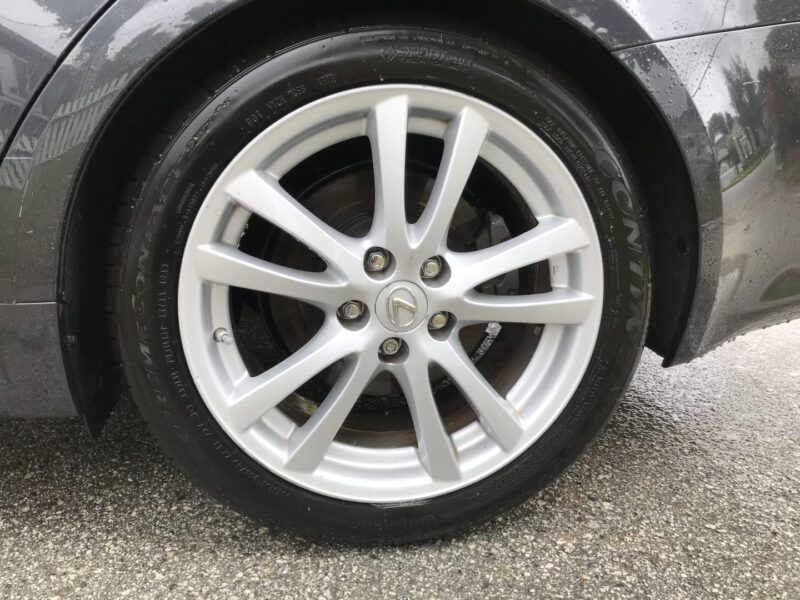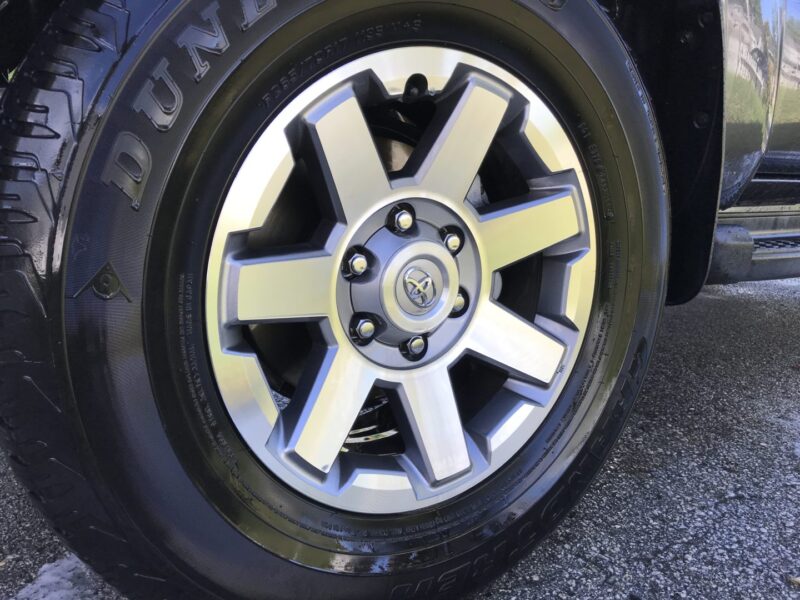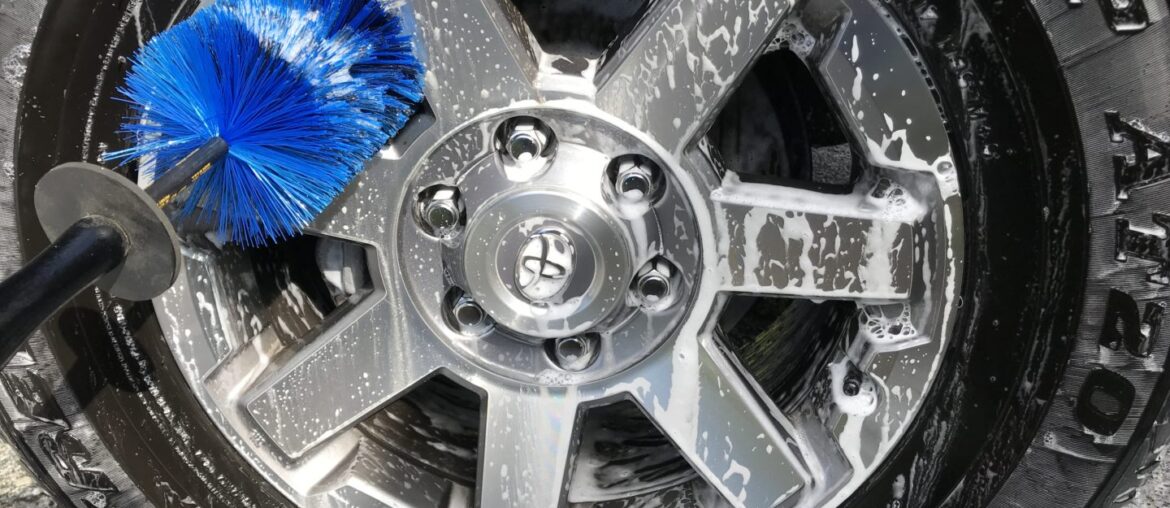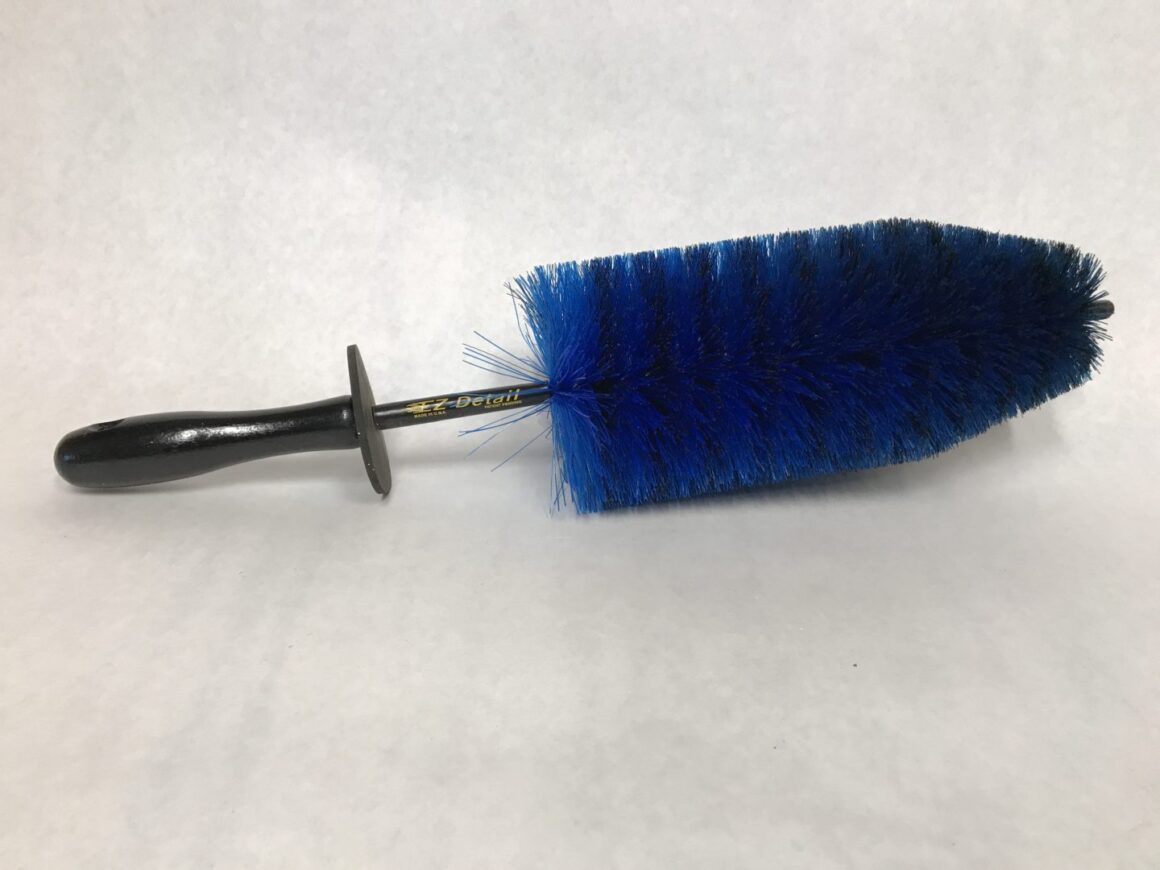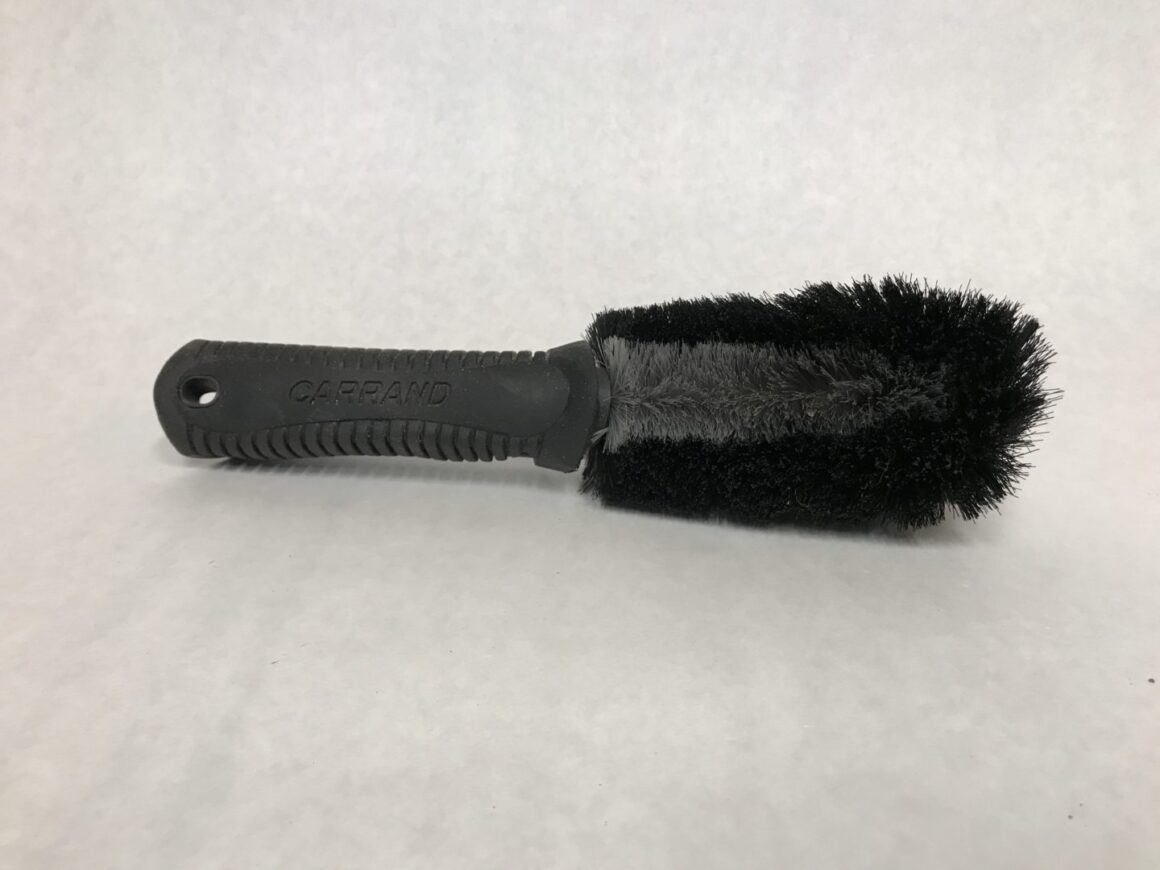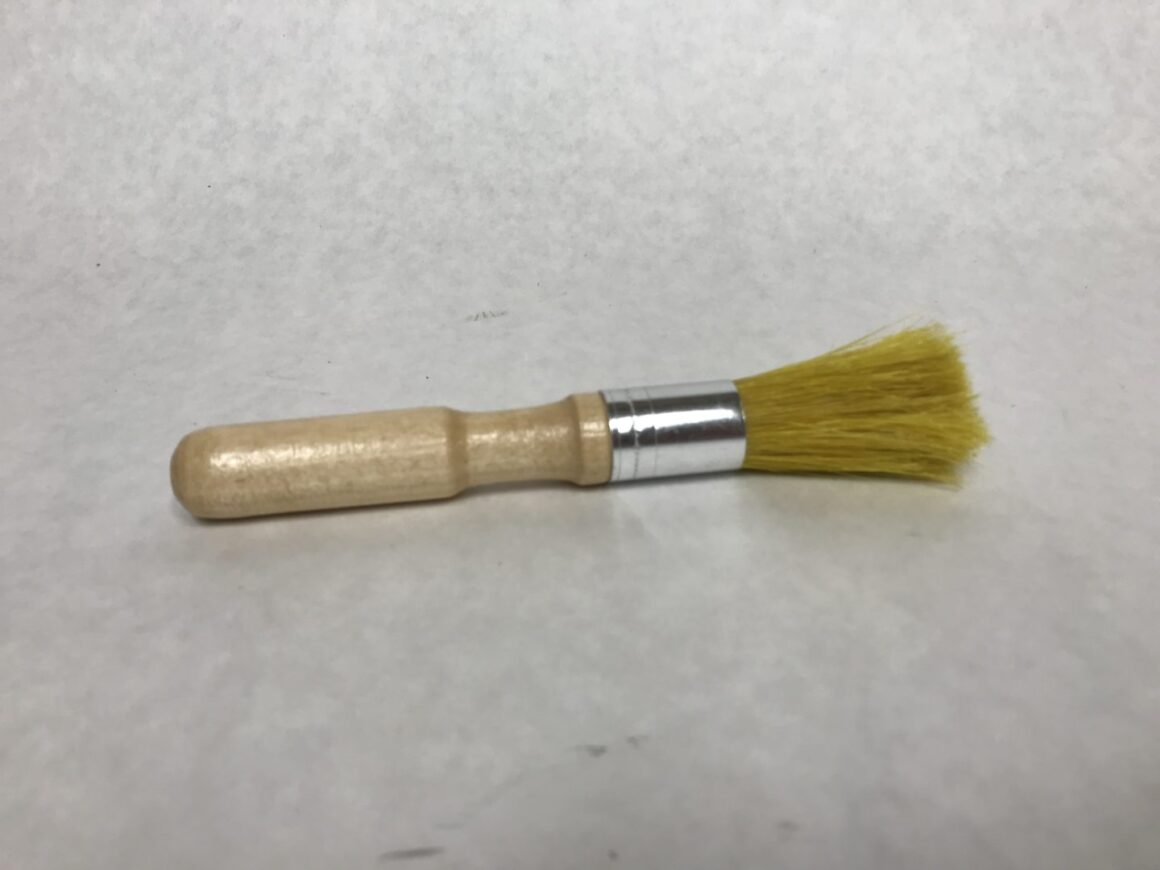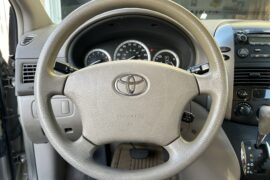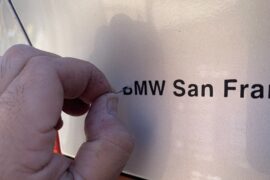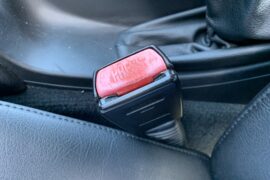When you make purchases through links on this site, The Track Ahead may earn an affiliate commission. Also, these posts are based off my own experiences. I am not responsible for any action you take as a result of reading this. Learn More
Washing wheels is an important part of cleaning your vehicle. Neglect the wheels and the car won’t appear to be completely clean with just a car wash alone. Just like washing the car’s exterior, washing the wheels can be as simple as performing a maintenance wash or it can be as involved as doing a complete detail. This all depends on what your goal is with your wheels. Do you want to simply get them clean? Are you planning to protect them so they are easier to clean in the future? Interested in getting your wheels to look immaculate?
Cleaning and protecting the wheels can be approached in a similar way that you wash the car’s paint. Although the wheels are typically much dirtier than the car’s paint surface, you should never use a cleaning tool that you use for the wheels and use it for the car’s paint. The wheels not only collect dirt and abrasives from the road just as the car’s body panels might, but it also collects brake dust that comes off of the brake pads. These particles are much more abrasive than the typical contaminants because they can be made up of may organic materials, as well as metallic ones.
The wheels can be washed and then protected so that it makes it easier to wash in the future. The wheels can also be detailed to produce a more flawless finish with various ways of doing so depending on the material and finish type. However, this guide will focus on solely cleaning and protecting the wheels.
Tools & Materials Needed
Wheel Cleaner
Griot’s HD Wheel Cleaner – effective at removing grime off wheels
Brown Royal – recommended for heavy duty cleaning
Sonax Full Effect – safest to use on wheels, mild cleaning action
Wheel Brush (for Barrel of Wheel)
EZ Detail Brush – great for reaching into and cleaning barrel of wheel
Another option: Speedmaster Wheel Brush – tried-and-true, pricier
Wheel Brush (for Face of Wheel)
Mother’s Wheel Brush – excellent reviews on Amazon, soft-bristle tip effective at cleaning wheel face
Adam’s Wheel Woolie – softer than a wheel brush if concerned about scratching the wheel
Lug Nut Brush
Carrand Lug Nut Brush – specifically made to clean lug nuts
Detailing Brush
Detailing Brush Set – 5 Different Sizes – excellent reviews on Amazon, works great for cleaning tight spots
Another option: Off-Brand Detailing Brushes – essentially all the same, choose well-reviewed brands
Car Wash Soap
Chemical Guys Honeydew Snow Foam – for use in a foam cannon, rich lather, smells great
Optimum No Rinse Wash – for water-less wash or for use as a quick wipe down
Popular alternatives: Sonax Shampoo, Meguiar’s Gold Class, Meguiar’s Hyper-Wash, Chemical Guys Mr. Pink, Duragloss 902
Car Wash Buckets
Grit Guard Insert
Grit Guards (keeps contaminants at bottom of bucket and prevents getting them back onto the wheel)
Wash Mitt (2 qty)
Relentless Drive Microfiber Mitt (2-Pack) – more control than microfiber towel at washing, get XL size (L size is very small and doesn’t even fit smaller hands)
Another option: AmazonBasics Microfiber Car Wash Mitt
Microfiber Towels
Zwipes Microfiber Cloths (48-Pack) – cheap and well-reviewed
Another option: AmazonBasics Microfiber Cloths (24-Pack)
Wheel Protectant
My opinion is to use any wax, sealant, or coating you have as they will all provide adequate protection and make it easier to clean in the future. Usually you’ll get the most protection with coatings, then sealants, and then the least protection will be with waxes.
Popular choices: Cquartz Dlux, Gtechniq C5, McKee’s 37, Pinnacle Black Label
Before/After Washing and Protecting the Wheels
Washing the wheels is usually the first step in the car washing process as it tends to be the dirtiest part of the car to be washed. It is wise to do this as there is potential for brake dust and grime splattering onto the paint’s surface during the wheel wash process. If you wash the wheels prior to the exterior of the car, then you’ll prevent this from happening.
When the wheels are cleaned, it is typically followed by the washing of the car’s exterior. Once the wheels are cleaned to rid of its harsh contaminants, there is less worry of those contaminants splashing back onto the paint surface.
How to Clean and Protect Wheels
Types of Wheel Brushes
There are many varieties of wheel brushes with each having its purpose. There are also different ways of agitating the surface of the wheel in order to clean it, hence the many different kinds of brushes available.
I’ll start with the wheel brushes such as the one below. This type of wheel brush is used to clean the inner barrel of the wheel if you do not want to remove the wheel to gain access to the back end. This is done by taking the brush and pushing it through the openings in the wheel and scrubbing the bristles on the inner barrel. These types of brushes sometimes have a flexible tip that you can bend into a curve which facilitates the cleaning of the barrel.
The next type of wheel brush is the lug nut brush. This is made up of three long loops with bristles attached. The lug nut brush is pushed directly onto each lug nut. The bristles then spread apart, in-turn scrubbing the sides of the lug nut. I don’t personally recommend using this type of brush as many times the lug nuts are recessed into the wheel itself, thus the lug nut brush isn’t effective. I prefer using other types of detailing brushes (smaller detail brushes and ones with long soft-bristles) for this purpose.
The next type of detailing brush is what you might buy for interior detailing. These smaller detail brushes give you a lot more control, albeit they are smaller and will take longer to clean the entire wheel.
A short-handled wheel brush as seen below is your all-around wheel brush. These types of wheel brushes do come in a long-handle version as well, but you’ll get more control with the short-handle version. These brushes can clean the entire wheel (and even the tire as well), with the exception of the inner barrel of the wheel. Make sure to get one with soft bristles–avoid the brushes that are not soft bristled tip. You may even consider a wheel woolie if you are concerned about scratching your wheels.
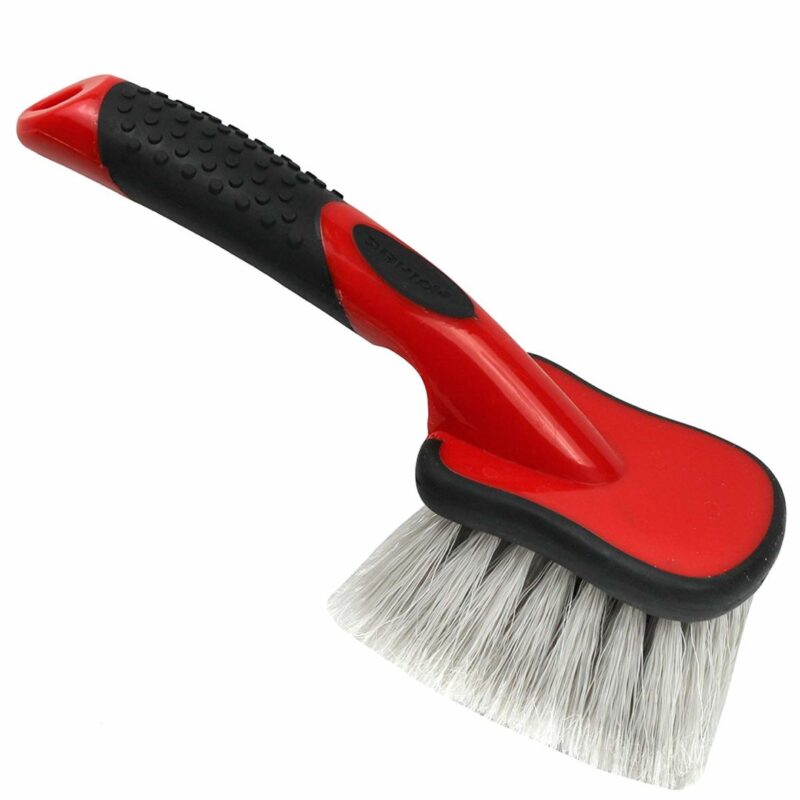
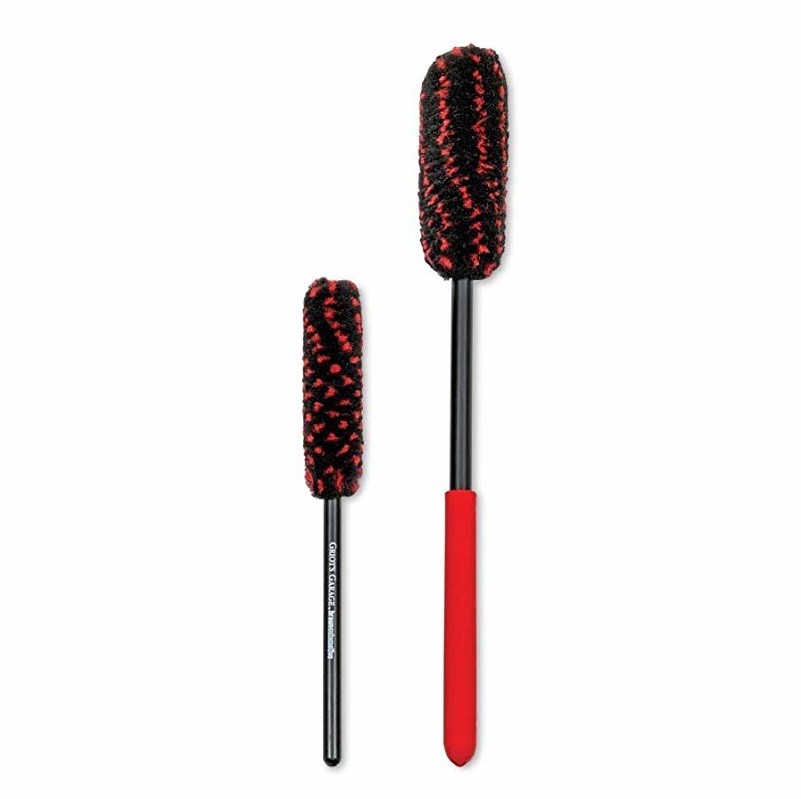
Cleaning the Wheels
Start by using your preferred wheel cleaner and spray it over the entire surface of the wheel. It’s best to do one wheel at a time because you don’t want to leave the wheel cleaner on the wheel for a long period of time. When the wheel cleaner is sprayed on the wheel, it breaks up the contaminants on the wheel. If this is left on the wheel for too long, it will dry up and bond to the wheel surface making it difficult to remove.
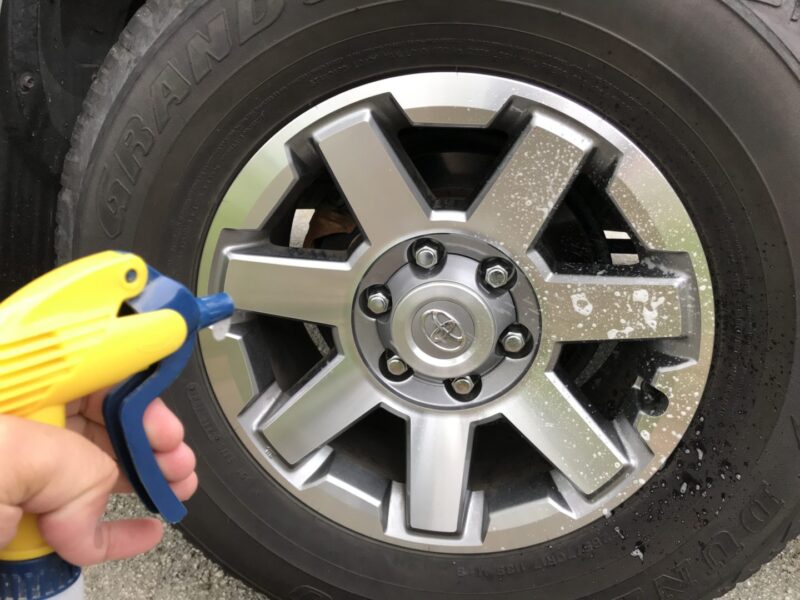
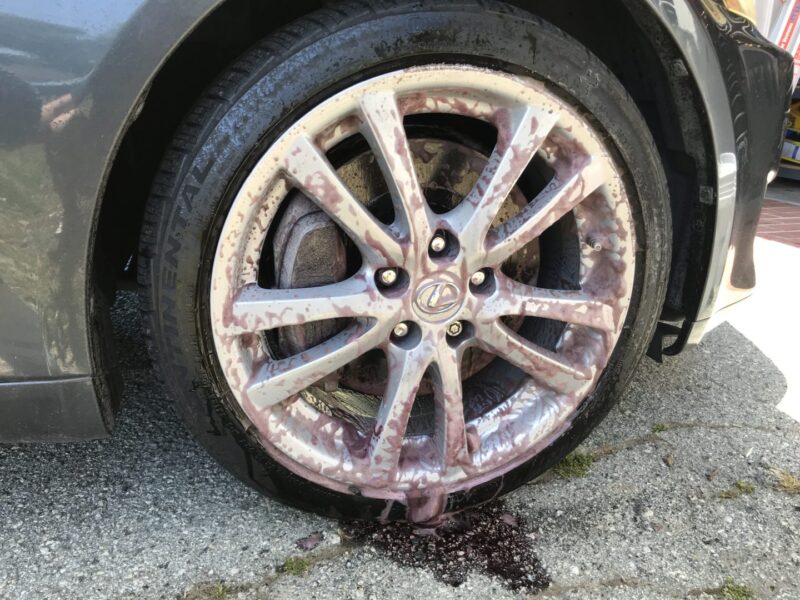
It’s a good idea to stick with doing one wheel at a time. After spraying with wheel cleaner, let it sit for about a minute. Then use a wheel brush for the inner barrel by running it through the wheel openings. Scrub as much of the inner barrel as possible.
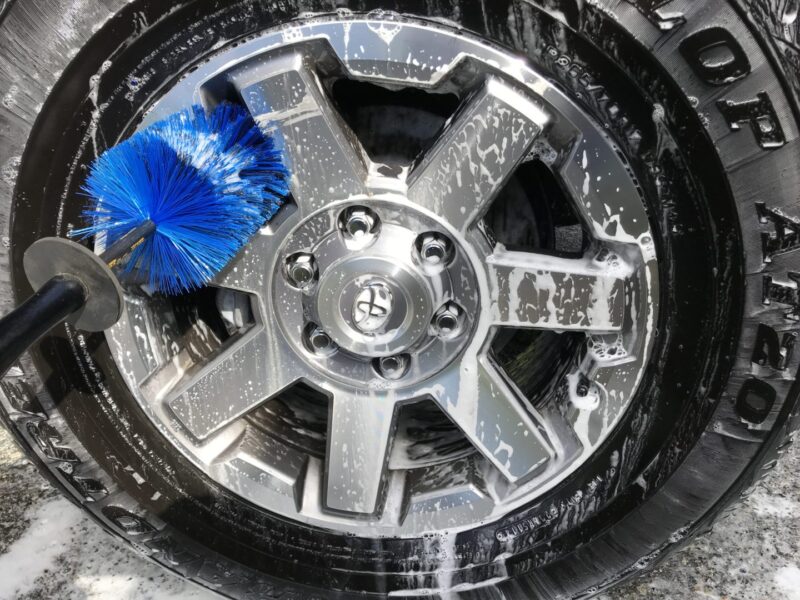
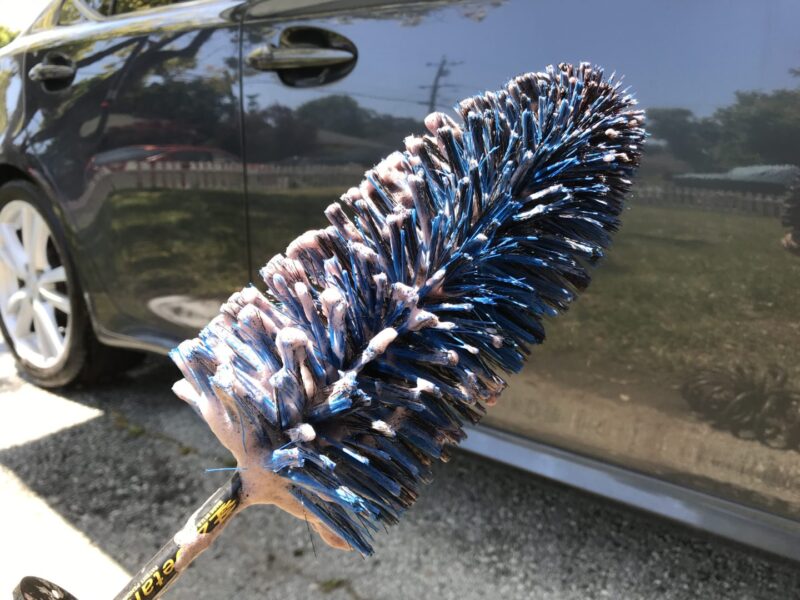
Use your other wheel brushes (or mitt, towel, woolie, etc.) to clean the surface of the wheel. The vast majority of wheel brushes will get most of the dirt and grime off the wheels. Smaller detail brushes and towels will provide more precision in cleaning the more intricate details of the wheel. These brushes work with the wheel cleaner to agitate and loosen up the contaminants in order for it to be rinsed away.
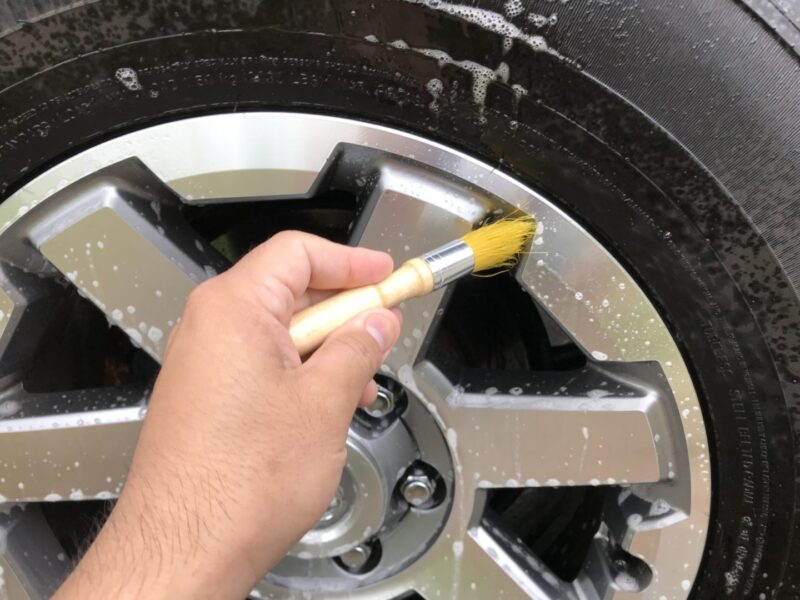
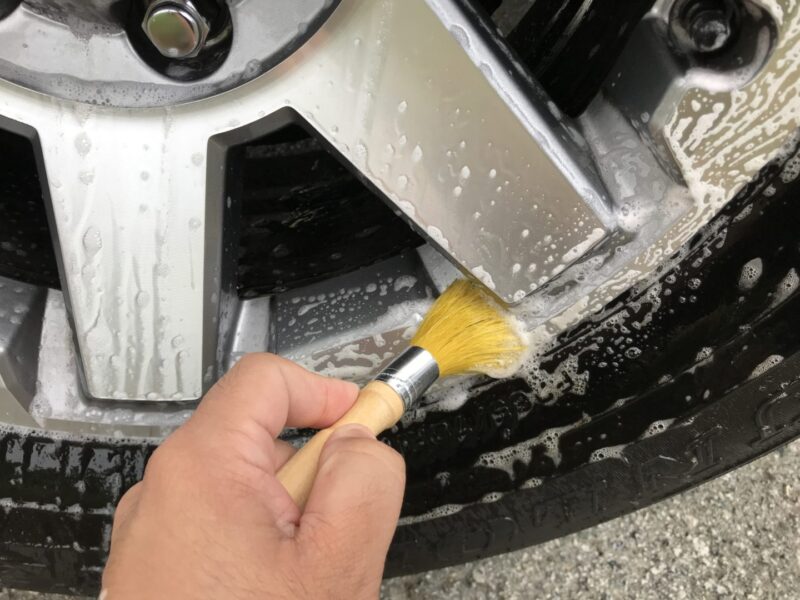
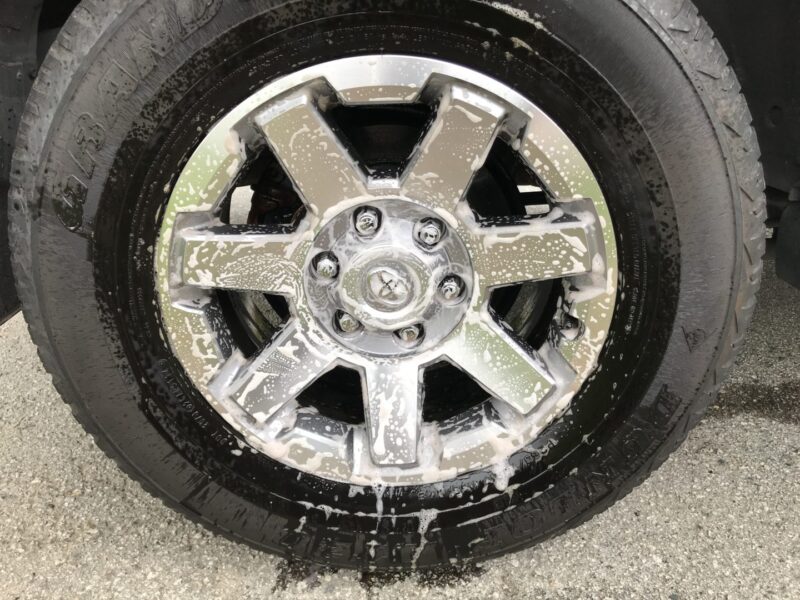
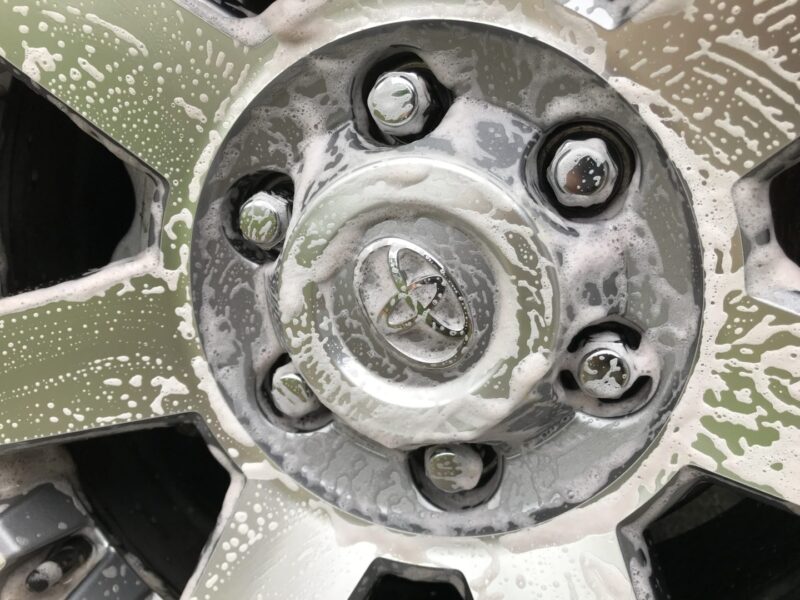
Then rinse off the soap making sure to rinse thoroughly on the exterior face as well as on the inner barrel. The wheel cleaner will likely end up on the brake components, which should also be rinsed off. Also rinse down the body panels surrounding the wheel in the case some of the brake contaminants splashed up there.
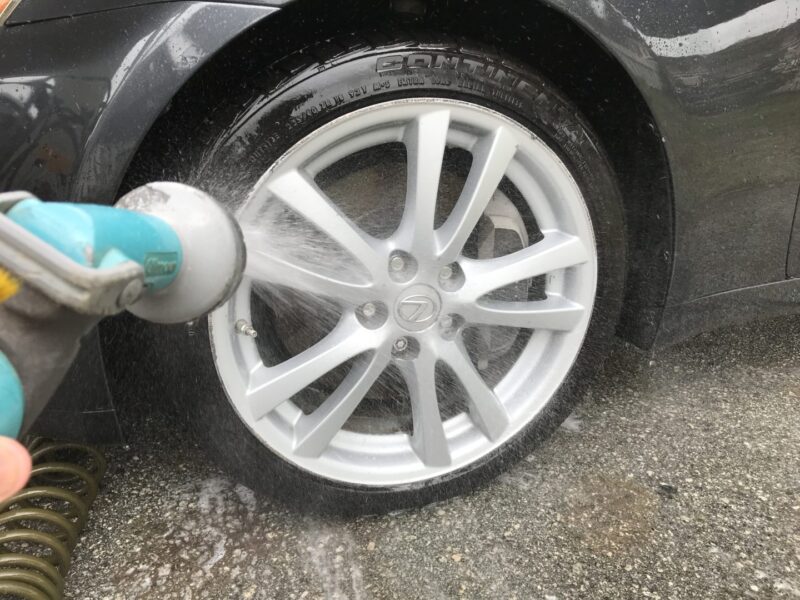
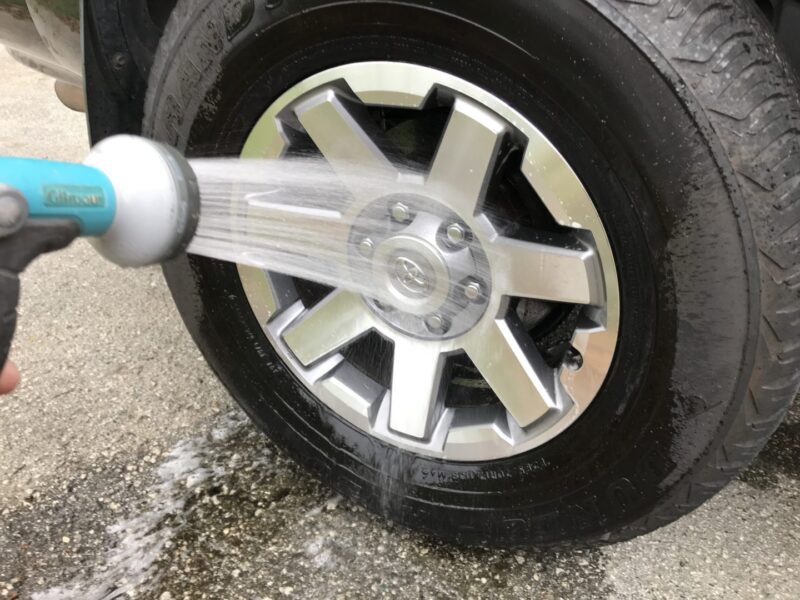
After the wheel is rinsed off, you can now see if there is any remaining dirt, grime, brake dust that is remaining. There will usually be some contaminants that remain on the wheel finish after the initial wash.
No matter how thorough you might think you are, you’ll always find something that you’ve missed while cleaning the wheel. I don’t mind this because wheel washing is typically the first step before an exterior wash. So, I’ll normally wash the wheels again with car wash soap (less harsh than wheel cleaners) when I’m doing my exterior car wash.
I’ll typically have a dedicated bucket for my brushes filled with car wash soap and water (including a grit guard). While doing my exterior wash, I’ll clean the wheels the same way I did with the wheel cleaner previously. The grit guard works effectively at keeping contaminants at the bottom of the bucket and preventing them from being reapplied to the wheel during the wash.
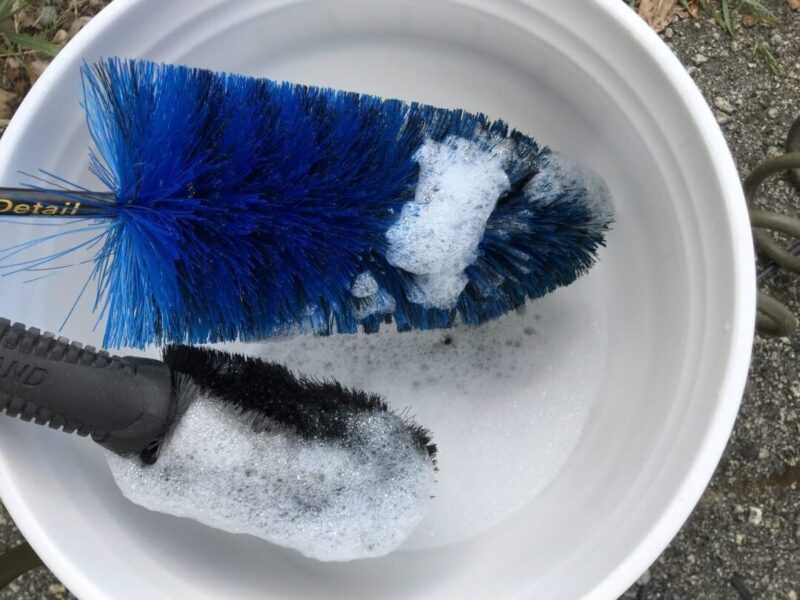
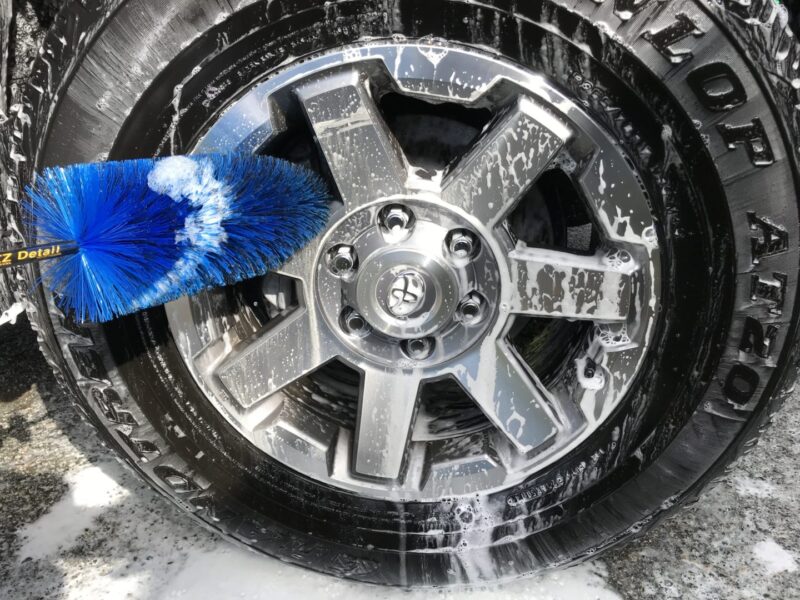
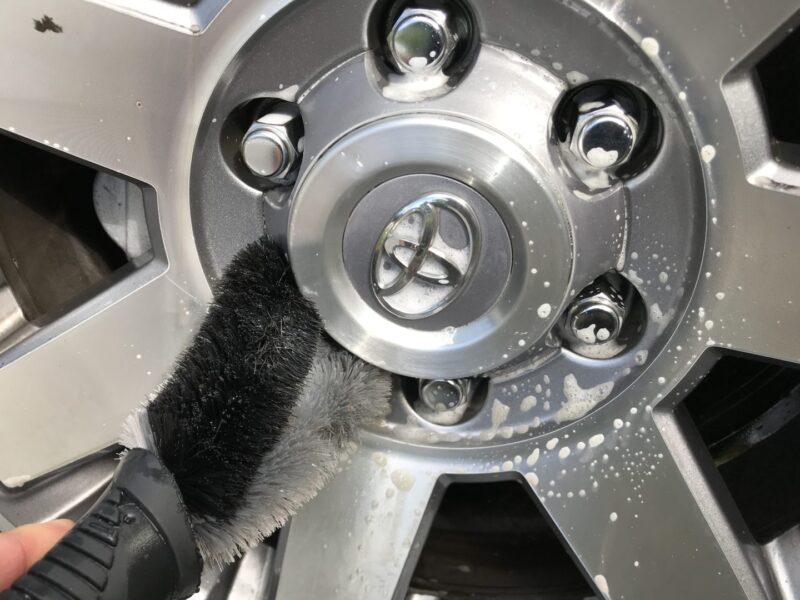
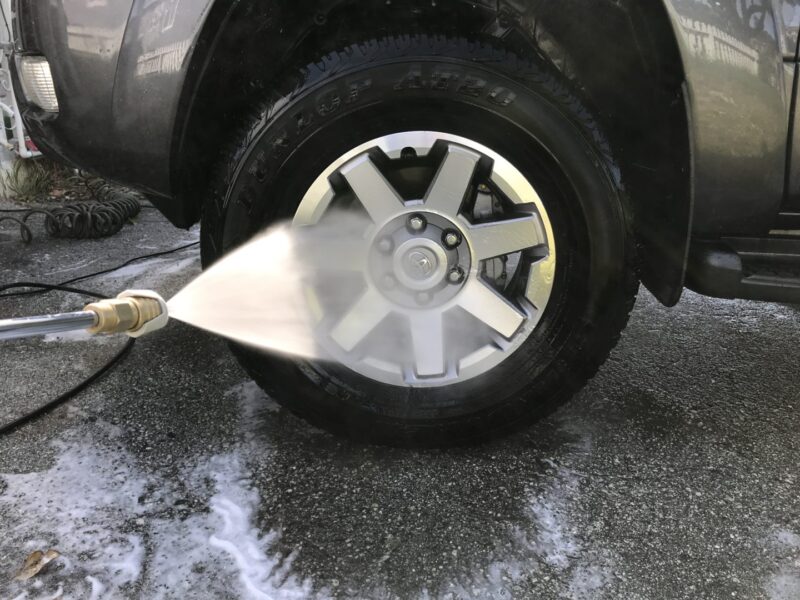
Sometimes there are spots that are more stubborn. I take used clay bars I’ve kept in the past for this occasion. Use some detailing spray along with the clay and rub these stubborn areas to further clean it up. Sometimes it just takes a little bit of abrasion from the clay to remove these contaminants.
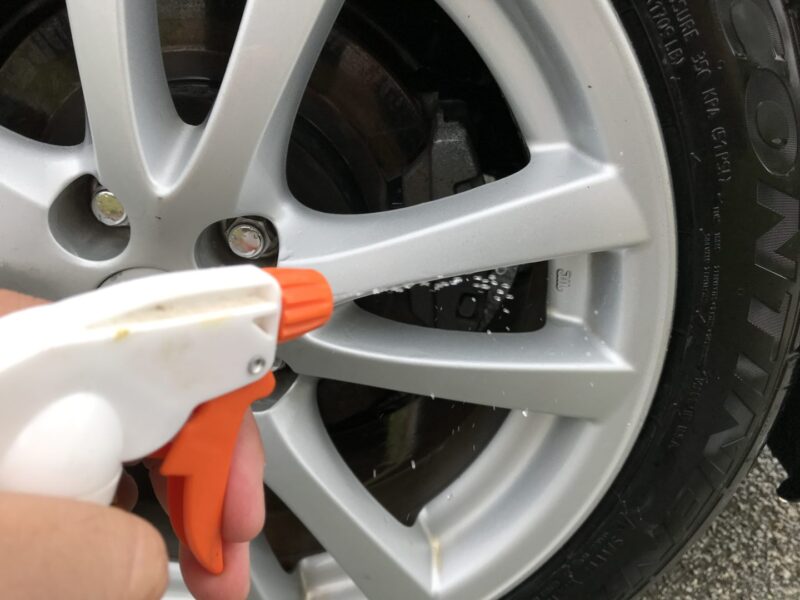
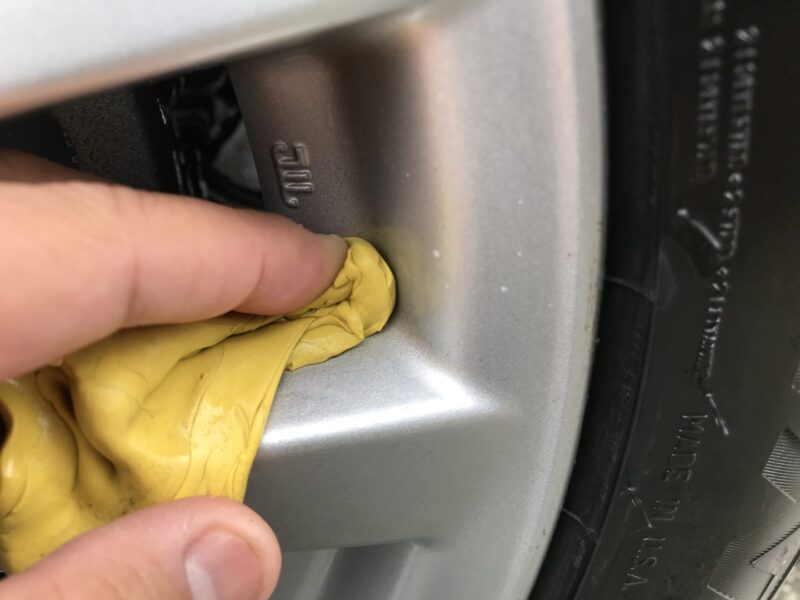
After you’ve washed the wheels a second time, you’ll usually address most of the cleaning of the wheel. You could stop here as the wheel will likely look clean. But, if you want to make your job easier when cleaning the wheels in the future, you might want to think about protecting the wheels.
Protecting the Wheels
Wheels can be protected just like a car’s paint can be protected: using a wax, a sealant, or even a ceramic coating. In this case, I’ve added some Collinite 845 Insulator Wax onto a microfiber towel and applied it to the entire wheel surface.
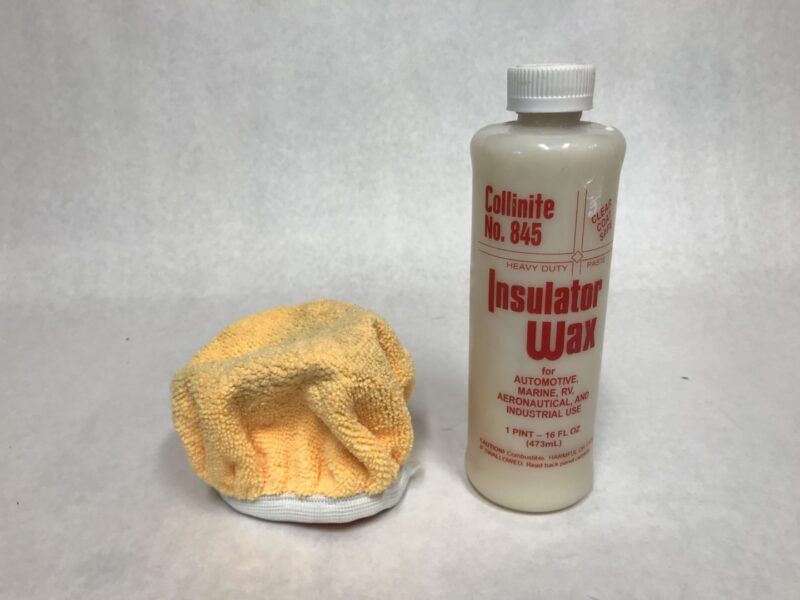
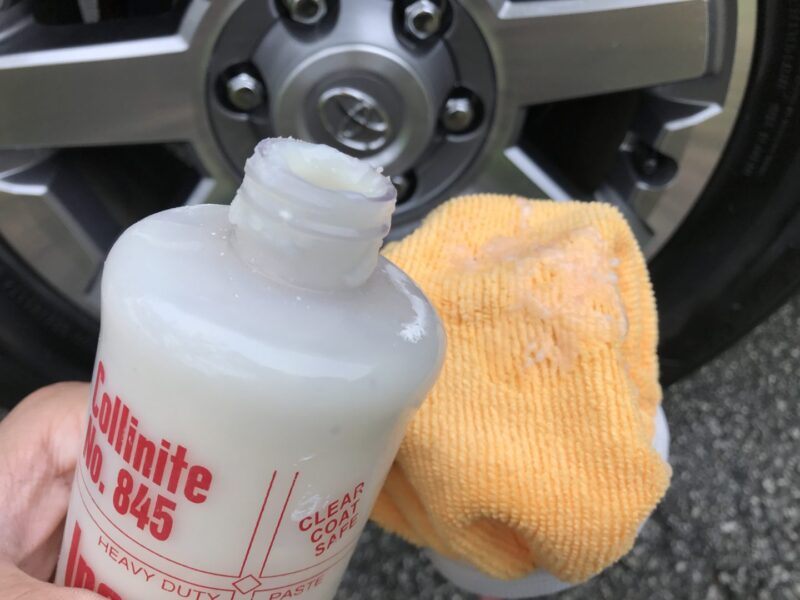
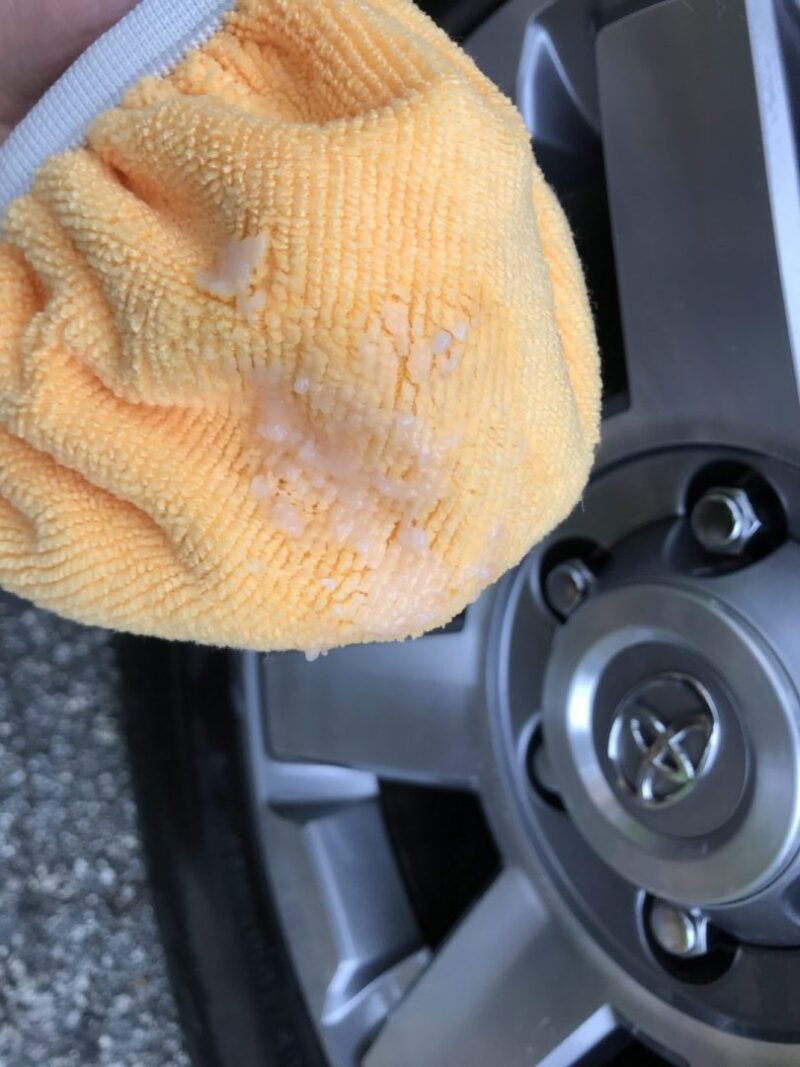
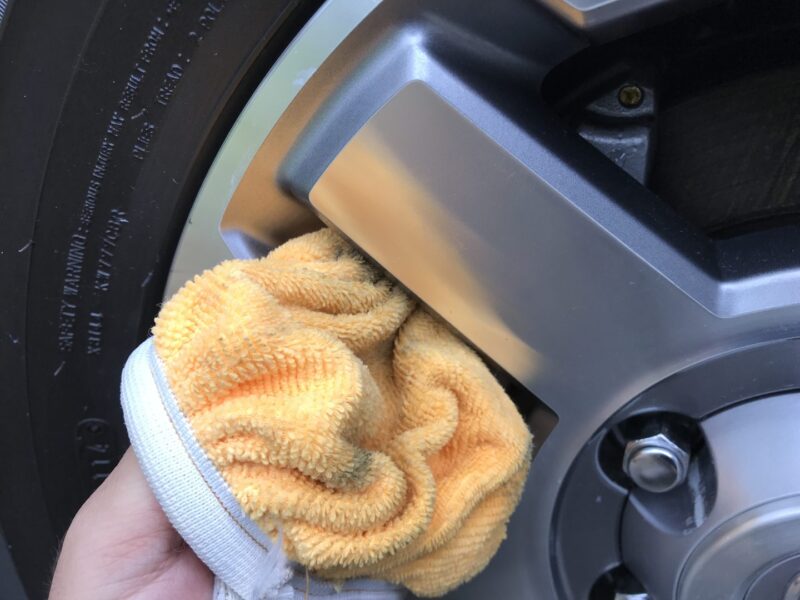
Once the wax has been applied, I’ll wipe it off with a clean microfiber cloth.
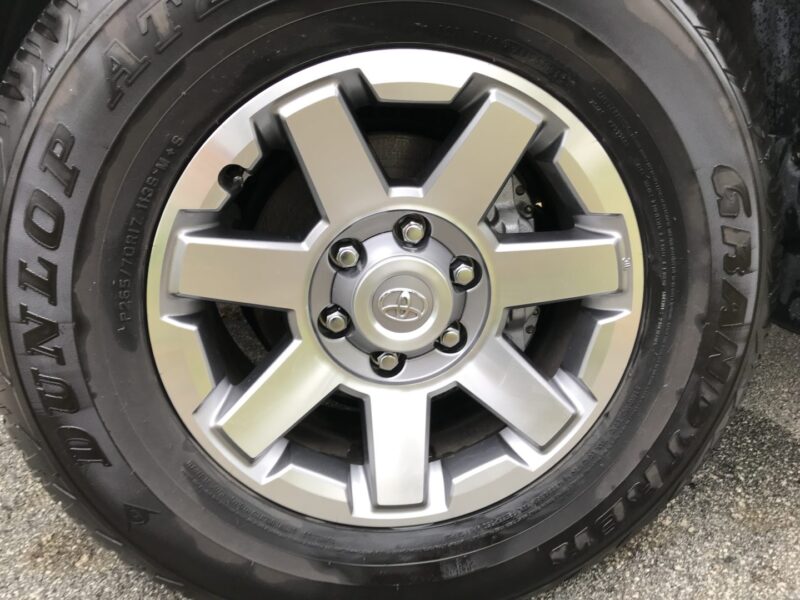
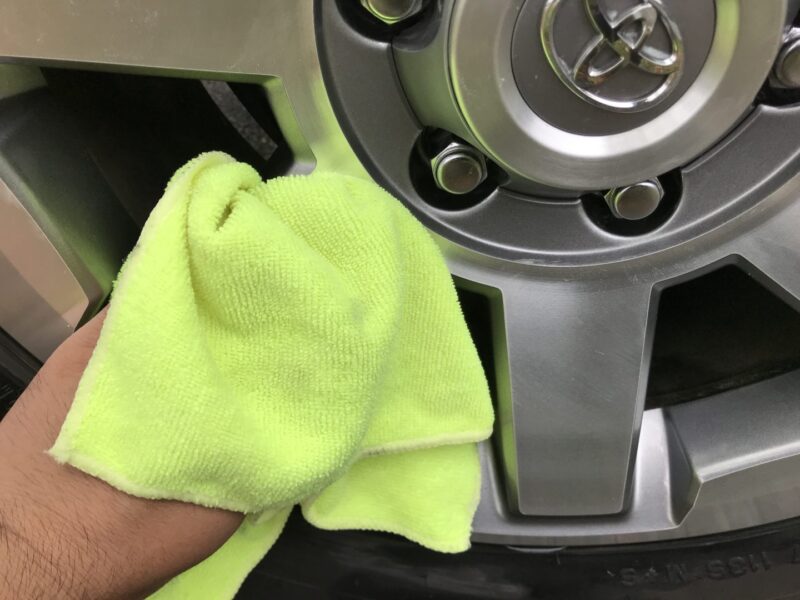
After the wax has been applied and removed, you’ve protected the wheel. There is a misconception that a protected wheel will not get as dirty as one that has not been treated. This is incorrect as the wheels will get just as dirty even if you’ve coated them prior.
The difference is that if you’ve cleaned and protected your rims, you’ll notice that it’s a lot easier to clean them the next time around. The wheel can be washed with normal car wash soap afterwards and be very effective at cleaning off the protected wheel.
Keep in mind that wheel cleaners are harsh and should only be used to clean extremely dirty and/or non-protected wheels. If you’ve already applied some sort of protection on the wheel, a wheel cleaner should not be used unless you want that protection stripped off the wheel.
Wheels Cleaned and Protected
For both of our cars, I’ve found that the wheels are in excellent shape and don’t need paint correction. I did notice some gouges in a couple rims after they were cleaned. Those will need to be addressed in the future with repairs. Other than that, I will be regularly washing these wheels along with my exterior maintenance wash keeping them looking nice and clean.
